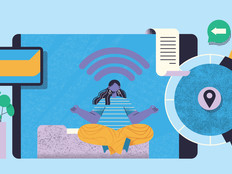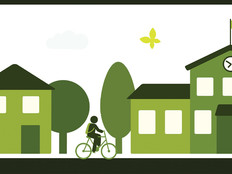Getting Up to Speed: States, Schools Partner to Roll Out Increased Broadband
Across the country, state governments are looking to take the lead in closing the digital divide for school districts. With the Federal Communications Commission providing funding for schools to equip all students with high-speed internet through its E-Rate program, states have the backing and incentive to ensure students have access to broadband in the classroom and at home.
Although 75 percent of all students now have internet connections that meet the FCC’s minimum standard of 100 kilobits per second, per student, states are still working to make headway on projects that look to expand opportunity to kids in public schools.
As schools ramp up to higher speeds, we’ve spotlighted several projects aiming to expand broadband access for students.
Arkansas: In the Home Stretch of Wi-Fi Equipage
Arkansas is making headway in its efforts to bring every public school district in the state online with high-speed broadband. The state kicked off its initiative in 2015, and with 214 of its 267 schools now connected at 100Kbps per student, Arkansas is just three months shy of reaching its goal, StateScoop reports in an interview with Arkansas Chief Technology Officer Yessica Jones.
The timing is optimal for undertaking across the board broadband coverage for K-12 public school systems. There is more fiber deployment by telecommunications providers than ever before. This gives providers a greater ability to work in partnership with states to provide more fiber to schools at far lower construction costs than they were previously able to do. This combined with the lowering cost of internet makes this an optimum time for states to seriously consider making the investment.
Jones credits the project’s success to the use of distributed network hubs that allowed the state to use a design that engaged smaller providers with regional or local reach. Using this method, the state extended the pool of bids from a few large telecommunications providers to companies of all sizes, garnering 22 bids and increasing competition.
As states embark on their own projects, Jones recommends that they make sure they understand exactly how their schools are using and paying for bandwidth before they begin.
Conduct a thorough study to accurately assess and get a clear picture of what your state’s schools are paying for bandwidth and what they are getting so you can effectively determine if public dollars are being maximized and if you are truly leveraging economies of scale. A statewide aggregated network could be a more cost effective solution versus districts individually paying for direct internet access. Our approach enabled us to double the bandwidth for one-third of the cost.
Hawaii Gets the Top Spot for School Broadband
Thanks to the success of a statewide broadband rollout for public schools, Hawaii is coming up first in K–12 broadband connectivity, according to the nonprofit group EducationSuperHighway’s 2016 State of the States report.
After upgrading 28 school districts in 2016, the state has now connected all of its 183,305 students at 100Kbps per student.
“In 2014 we accomplished our goal to deliver Wi-Fi to all public schools statewide, which was a huge undertaking by our Office of Information Technology Services and Office of School Facilities and Support Services,” said Superintendent Kathryn Matayoshi in a press release on the Department of Education’s website. “The work of our teams has paid off and we’re very proud to be recognized as number one in the country for our Wi-Fi connectivity.”
Between 2010 and 2015, the Hawaii State Department of Education was able to increase school broadband speeds from 0.3 gigabit per second to 8Gbps, according to the report. And with all schools maximizing the bandwidth they are getting for their budgets, the state is receiving top marks for its Wi-Fi network upgrades.
“Having access to the internet allows our teachers to enhance classroom lessons and gives our students vast digital learning resources that make learning an interactive, hands-on activity. Complete connectivity is a large step forward towards 21st-century learning initiatives and preparing our students for college and careers,” said Matayoshi.
Minnesota Expands Broadband to the Home
The Pew Research Center reports that 5 million families with school-age children don’t have access to high-speed internet at home, so bringing broadband to schools is only half the battle.
Recognizing this digital gap, the Minnesota Department of Education has partnered with school internet provider Kajeet to fund broadband connectivity to students who don’t have access to the internet outside of their classroom.
“Part of our district has high-speed fiber, and part has nothing. But, with high poverty rates, people can’t always afford internet,” said Matt Grose, superintendent for Minnesota’s Deer River Public Schools. “Now we provide internet connectivity for homework to kids in our district who didn’t have access at home.”
Through a grant, school districts are able to provide students with mobile broadband access through technology such as Kajeet’s SmartSpot Wi-Fi hotspots. For those who are eligible, a second grant would equip district school buses with Kajeet SmartBus connectivity so students make the most of their commute and do their homework while en route.
“Rural students are at a disadvantage to their urban peers if their Internet connectivity is lacking. And providing educational filtering keeps students on task to help them succeed,” said Grose.









